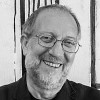“They Fear Our Lenses”: Gaza Photojournalists Speak Out
Israel killed six journalists with an airstrike on a press tent in Gaza City last month. Among the dead in the August 10 attack were Al Jazeera correspondent Anas Al-Sharif and his colleague, photojournalist Mohammad Nofal.
In the days leading up to the killing, I had been speaking with Mohamed’s brother and fellow photojournalist, Ibrahim Nofal, 27, about what it’s like to be a photojournalist in Gaza today, to witness horror and massacres.
“This is the only thing I know how to do,” he said. “Every person here has a role in this war. Mine is to document. If I don’t photograph it, this moment will never exist.”
His job may be the most dangerous in the world. Israel killed five more journalists on August 25, in a “double-tap” missile strike on Nasser Hospital in Khan Younis that appeared to be designed to kill the rescue workers and journalists who responded to the initial strike.
The day after Israel killed his brother, I asked Ibrahim what he misses most. He immediately responded: “My mother and my brothers Omar and Mohammad, who were killed in this genocide. I had a life in Turkey when I was traveling; I had plans. But none of it matters now. Only my mother and brothers do.”
I and my own brother, Ali Skaik, spoke with Ibrahim and five other photojournalists in Gaza about their daily lives and what the deadly task of documenting the genocide means to them. We also asked them to share one photo that is close to their hearts. I fear that any of them may join the ranks of the 221 other journalists that Israel has killed in Gaza in the past two years. I fear that I and my brother could be killed any day too, as the Israeli military advances closer to our home.
Ibrahim Nofal Photo: Courtesy of Ibrahim NofalIbrahim is still working, despite the risks. He’s come close to death before. “Once, a gas canister exploded beside me — I thought it was the end. Another time, a house we were documenting was hit, and everyone around me was injured,” he said. His home was bombed on October 30, 2023, and five of his cameras were destroyed.
His photos have not only traveled far, they have changed lives: Some of those he photographed were able to leave Gaza for medical treatment because the world saw their suffering.
He keeps documenting. “The camera is my weapon,” he said. “It respects me because I respect it. Through it, I make the world see Gaza and its people.”
Documenting the genocide is not a choice — it is a responsibility, carried out with a sense of duty and love for our homeland and people. In Gaza, every image carries a cost, and every photographer bears both the burden of memory and the duty of witness.
“Realities That Cannot Be Hidden Behind Propaganda”
Yazan Abu Foul, a 2-year-old resident of Al-Shati refugee camp, suffering from severe malnutrition amid widespread famine in the Gaza Strip on July 19, 2025. Photo: Abdul Hakim Abu RiashAbdul Hakim Abu Riash, 37, captured a searing photograph of starvation in Gaza: the image of 2-year-old Yazan Abu Foul in the Al-Shati refugee camp, suffering from severe malnutrition.
He said he was not surprised when American media outlets, biased in favor of Israel, tried to deny or discredit his work and the work of his fellow Palestinian journalists.
Abu Riash in his press gear. Photo: Courtesy of Abdul Hakim Abu Riash ........





















 Toi Staff
Toi Staff Gideon Levy
Gideon Levy Tarik Cyril Amar
Tarik Cyril Amar Daoud Kuttab
Daoud Kuttab Jason Hickel
Jason Hickel Yossi Klein Halevi
Yossi Klein Halevi Rachel Marsden
Rachel Marsden Constantin Von Hoffmeister
Constantin Von Hoffmeister Mikhail Salita
Mikhail Salita Stefano Lusa
Stefano Lusa Belen Fernandez
Belen Fernandez
